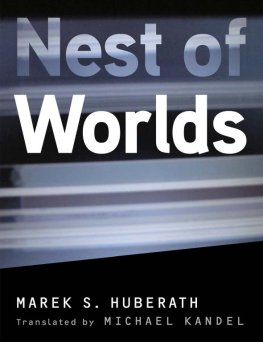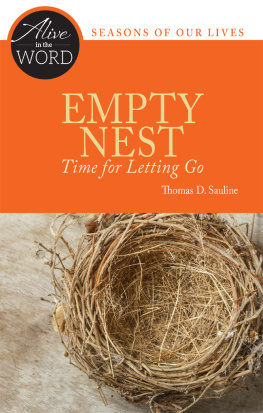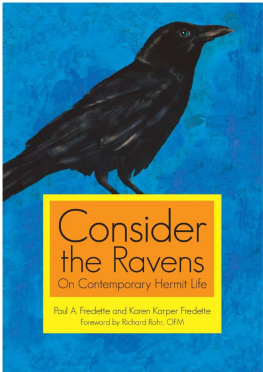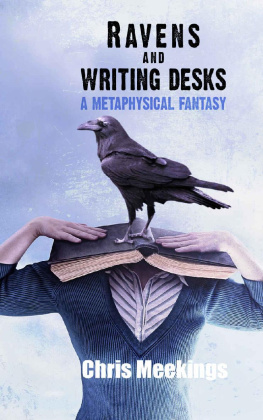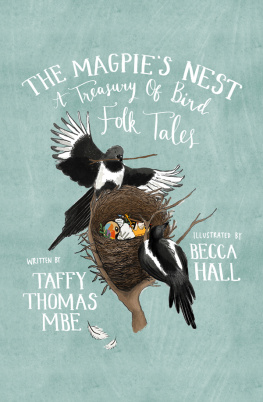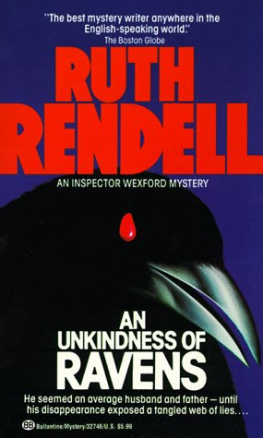Sarah (author) Thomas - The Ravens Nest
Here you can read online Sarah (author) Thomas - The Ravens Nest full text of the book (entire story) in english for free. Download pdf and epub, get meaning, cover and reviews about this ebook. year: 2022, publisher: Atlantic Books, genre: Detective and thriller. Description of the work, (preface) as well as reviews are available. Best literature library LitArk.com created for fans of good reading and offers a wide selection of genres:
Romance novel
Science fiction
Adventure
Detective
Science
History
Home and family
Prose
Art
Politics
Computer
Non-fiction
Religion
Business
Children
Humor
Choose a favorite category and find really read worthwhile books. Enjoy immersion in the world of imagination, feel the emotions of the characters or learn something new for yourself, make an fascinating discovery.
- Book:The Ravens Nest
- Author:
- Publisher:Atlantic Books
- Genre:
- Year:2022
- Rating:5 / 5
- Favourites:Add to favourites
- Your mark:
- 100
- 1
- 2
- 3
- 4
- 5
The Ravens Nest: summary, description and annotation
We offer to read an annotation, description, summary or preface (depends on what the author of the book "The Ravens Nest" wrote himself). If you haven't found the necessary information about the book — write in the comments, we will try to find it.
The Ravens Nest — read online for free the complete book (whole text) full work
Below is the text of the book, divided by pages. System saving the place of the last page read, allows you to conveniently read the book "The Ravens Nest" online for free, without having to search again every time where you left off. Put a bookmark, and you can go to the page where you finished reading at any time.
Font size:
Interval:
Bookmark:

Sarah Thomas lyrical, thoughtful prose takes us on a journey, both physical and emotional, to the far north a region about which stories are increasingly essential, especially from those who live there. One senses her filmmakers eye in her crisp visual imagery, and in her careful portraits of both people and place.
Cal Flyn, author ofIslands of Abandonment
The Ravens Nest asks what it means to belong to a place from which we do not originate. It considers Icelandicness and proximity to it. Both anthropological and tender in detail, Sarah Thomas recalls an immersion that sometimes feels like drowning, at others a rush on swell to the shore. Her skills as an anthropological documentary maker come across on the page, but she is a participant in this story, present and implicated in what it means to dwell between tongues, cultures, landscapes and geological timescales.
Abi Andrews, author ofThe Word for Woman is Wilderness
The Ravens Nest is a story of many stories, nested together: the making and ending of relationships. Those chance meetings across wide unlikely spaces, how they spin for a while and how we can bear to let them go. But boil that down further and I would say it has much to say about chance, and taking chances, and being open to chance and also the chance trickery nature plays on us. And that feeds into where stories come from, and whose stories we can tell. Sarah Thomas evokes characters and the culture, a sense of time and the landscape in beautiful prose which makes my brain do cartwheels.
Nancy Campbell, author ofThe Library of Ice
Sarah Thomas is a writer and documentary filmmaker with a PhD in Interdisciplinary Studies. Her films have been screened internationally. She is a regular contributor to the Dark Mountain journal and her writing has also appeared in the Guardian and the anthology Women on Nature, edited by Katharine Norbury. In 2020, she was nominated for the Arts Foundation Environmental Writing Award. She was longlisted for the inaugural Nan Shepherd Prize and shortlisted for the 2021 Fitzcarraldo Essay Prize for the proposal for this book. This is her debut.

Published in hardback in Great Britain in 2022 by Atlantic Books, an imprint of Atlantic Books Ltd.
Copyright Sarah Thomas, 2022
The moral right of Sarah Thomas to be identified as the author of this work has been asserted by her in accordance with the Copyright, Designs and Patents Act of 1988.
All rights reserved. No part of this publication may be reproduced, stored in a retrieval system, or transmitted in any form or by any means, electronic, mechanical, photocopying, recording, or otherwise, without the prior permission of both the copyright owner and the above publisher of this book.
Every effort has been made to trace or contact all copyright holders. The publishers will be pleased to make good any omissions or rectify any mistakes brought to their attention at the earliest opportunity.
Some of the names in this book have been changed to protect the privacy of people and places. Versions of some chapters previously appeared in Dark Mountain Issue 7, Caught by the River and s. A floating house G. Kristinsdttir; Seal H. Gurarson; Seal looks back N. Pilters.
10 9 8 7 6 5 4 3 2 1
A CIP catalogue record for this book is available from the British Library.
Hardback ISBN: 978 1 83895 668 4
E-book ISBN: 978 1 83895 670 7
Printed in Great Britain
Atlantic Books
An imprint of Atlantic Books Ltd
Ormond House
2627 Boswell Street
London
WC1N 3JZ
www.atlantic-books.co.uk
To the ravens, for making, unmaking and remaking the world.
And for the light; always the light.
I am sitting in the kitchen of my old, corrugated-iron-clad house. Underneath me, 800 kilometres to the southeast, the earth has been breaking up since the evening I parked up out front, one long week ago. I arrived as the day dimmed, relieved to have the hours of rock and sea and fog behind me months of anticipation giving way to reality. Then, 8 kilometres under the ground, below a distant glacier, unseen but detected by geologists and their myriad instruments, a tremor swarm began. I heard about it on the radio the next morning as the late summer sun poured in through the large windows. There had been 250 earthquakes during the night.
When the news broke, I laughed at the consistency with which my comings and goings between England and Iceland seemed to coincide precisely with weather changes and volcanic activity. The eruption of Eyjafjallajkull the Icelandic volcano that nobody could pronounce, which closed European airspace in 2010 was preceded by a lesser-known smaller eruption on Fimmvruhls. That had begun the day I arrived in March 2010 and ended the day I left, with the eruption of Eyjafjallajkull. I had been on one of the last flights for many days, separated from my husband by a cloud of ash.
Now, each day, there are more earthquakes, and a crack has grown to 50 kilometres long in a week still invisible as it rips below Vatnajkull, the largest glacier in the country. Every day, almost every hour from 7 a.m. till 10 p.m., the radio news announces the latest earthquakes, usually in the region of 1,000 per day now, the strongest recently reaching 5.7 on the Richter scale. I hang on every word, pretty sure an eruption will follow, and not knowing whether I should prepare myself to leave before I risk getting stuck here.
The first few days of this trip were difficult. My destination clarity in an uncertain marriage is far from guaranteed. I have mostly been here alone. Well, with my cat. And a brief but intense lifetime of memories of this place to process some dark, some joyful.
This house and I felt asynchronous when I walked in. It looked much the same as it did when I left, all those months ago. I had asked my husband, Bjarni, for our cat to be here when I returned. He made sure he was at the house when I arrived and was cooking lamb in the kitchen, almost like nothing had ever happened. The only visible evidence of time passing was a few kind notes from tourists who had come and enjoyed this thing we had created, while we did not live in it ourselves this bohemian Arctic hideaway, this romantic retreat while we had tried to figure out how and where we could live together, and failed.
I feel the need to do something physical, and aesthetic, to mark the change. In front of me, I peel decades of wallpaper, hessian and old newspaper from the walls in my study, to get back to the bare bones of this place this wooden kit-house from Norway, erected in 1902. We know the name of the person who erected it, and that his sons wife lived in it for 70 years before we became the current owners. It may be that couples history I am peeling away now, to reveal the time-darkened honey-coloured pine panelling it was made with, before it became fashionable to mask it with paper: a well-travelled wood, for there were no trees here big enough to build with. The final layer is The Weekly Scotsman from 19 June 1909. How did that newspaper end up in this house just below the Arctic Circle?
Old news, which one day mine shall also be. Trees, wood, paper, words they vanish as they form.
Font size:
Interval:
Bookmark:
Similar books «The Ravens Nest»
Look at similar books to The Ravens Nest. We have selected literature similar in name and meaning in the hope of providing readers with more options to find new, interesting, not yet read works.
Discussion, reviews of the book The Ravens Nest and just readers' own opinions. Leave your comments, write what you think about the work, its meaning or the main characters. Specify what exactly you liked and what you didn't like, and why you think so.


